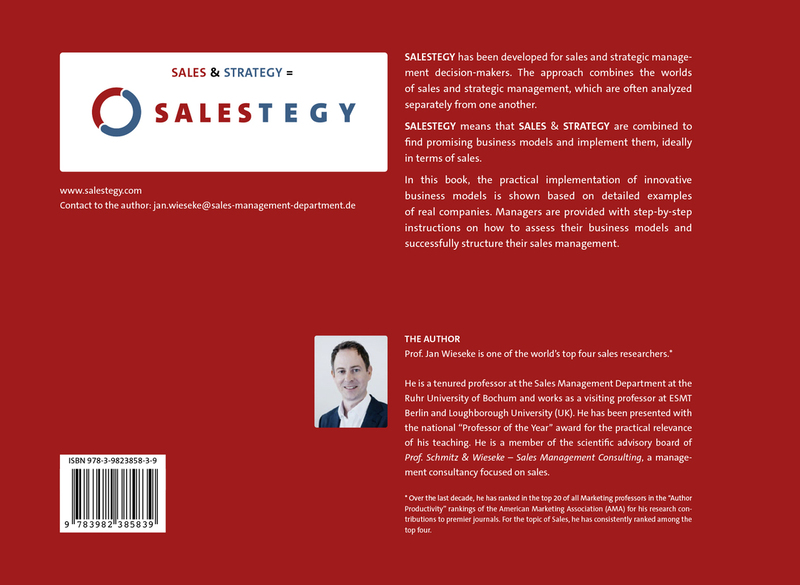The new book by Prof. Dr. Jan Wieseke (Volume 1)
THE SALES PROFIT CHAIN
Understanding Causal Chains – Optimizing Sales – Increasing Profitability
Understanding Causal Chains – Optimizing Sales – Increasing Profitability
The new book by Prof. Dr. Jan Wieseke (Volume 1)
The Sales Profit Chain (SPC) has been developed for sales decision-makers. To accomplish this, we worked with more than 4,000 companies. The SPC approach uses 12 questions to analyze the most important causal chains of sales and therefore to access the most effective growth and efficiency levers.
The Sales Profit Chain uses a coherent overall sales logic (end-to-end approach).
Instead of isolated, individual aspects of sales, the causal chains of sales management are made visible.
The obstacles to implementing measures at the operational level are also explicitly overcome.
The TUNE method enables a sales ultrasound based on 12 questions for analyzing the most important causal chains.
In the Sales Profit Chain approach, analysis is undertaken from right to left and starts with the definition of the effect targets. The U– and N–chain analyses then follow. Finally, T management measures are derived.
Use the available scoresheets to apply the TUNE method in practice for your sales organization.
The book contains a scoresheet for the practical application of each of the 12 TUNE questions. The scoresheets can be used to assess your sales department step-by-step along the entire Sales Profit Chain. The scoresheets also help you to identify the critical challenges for your sales organization and to visualize them using a traffic light system.

Prof. Dr. Jan Wieseke
Jan Wieseke is one of the world’s top four sales researchers.*
He is a tenured professor at the Sales Management Department at the
Ruhr University of Bochum and and works as a visiting professor at ESMT Berlin and Loughborough University (UK). He has been presented with the national “Professor of the Year” award for the practical relevance of his teaching. He is a member of the scientific advisory board of Prof. Schmitz & Wieseke – Sales Management Consulting, a management consultancy focused on sales.
* Over the last decade, he has ranked in the top 20 of all Marketing professors in the “Author Productivity” rankings of the American Marketing Association (AMA) for his research contributions to premier journals. For the topic of Sales, he has consistently ranked among the top four.
SALESTEGY has been developed for sales and strategic management decision-makers. The approach combines the worlds of sales and strategic management, which are often analyzed separately from one another.
SALESTEGY means that SALES & STRATEGY are combined to find promising business models and implement them, ideally in terms of sales.
In this book, the practical implementation of innovative business models is shown based on detailed examples of real companies. Managers are provided with step-by-step instructions on how to assess their business models and successfully structure their sales management.

“You’re not Harvard!” – So why the „Bochum" Sales Profit Chain approach?
You may have asked yourself why on earth I call the essential concept in this book the “Bochum” Sales Profit Chain approach. In the run-up to publishing the book, I was actually urged several times not to mention “Bochum” so explicitly. Even one of my best friends advised me: “Don’t call it Bochum!”
After all, Bochum does not exactly have an outstanding reputation in the world of science. The situation would be different with a Harvard SPC approach. The intention is also to use the Sales Profit Chain approach everywhere, not just in Bochum.
I heeded most of the pieces of advice given by my friends while writing this book, but not this one. By mentioning Bochum, I would like to express my ties to our city and to the Ruhr University of Bochum because our team is proud to have established Europe’s one and only Sales Management Department in Bochum.